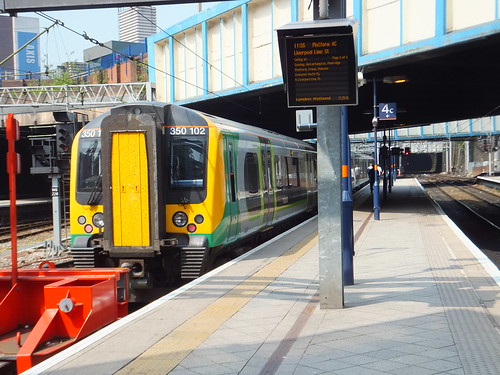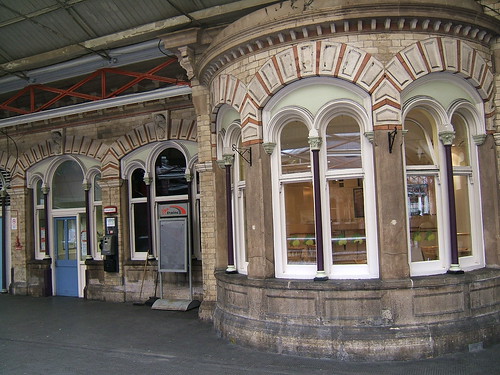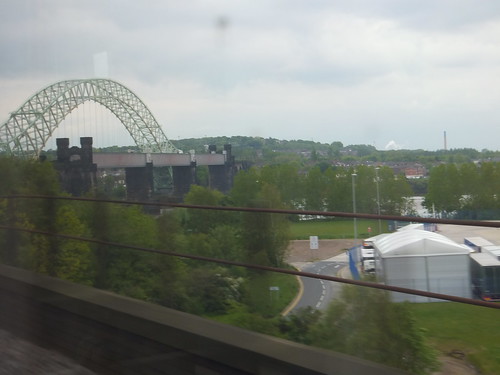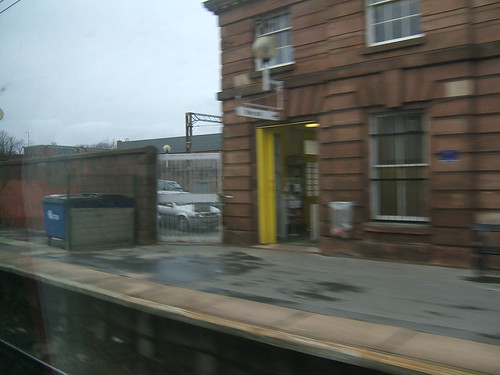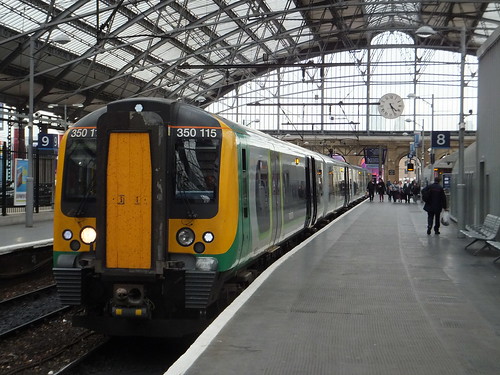The 'London Midland' franchise started on 12th November 2007 and their service from Birmingham New Street to Liverpool Lime Street is now well-established. At New Street, a short bay platform called '4c' was added at the north end of the original Platform 4/Platform 5 island platform. It's not that easy for the uninitiated to find this bay. Because it's common to have two trains on a single through platform at New Street, the southern half of each through platform is called 'a' and the northern half 'b'. This in itself can be a bit confusing for unfamiliar passengers but, once you've got your head round that, where do you look for a 'c' platform? Because the bay 4c is a fairly modern addition, the Passenger Information Displays (PID) and signage aren't as helpful as they might be. If you manage to walk the right way along platform 4, there is a PID at the last moment to confirm you're in the right place but I have seen rather bewildered passengers trying to find the right train.
Platform 4c at Birmingham New Street with a Class 350 about to depart for Liverpool.
I've taken a few 'Modern Image' photographs around Birmingham and Wolverhampton - they're in the set West Midland Railways - but in my mind's eye I still see the railway as it was in steam days.
After a few miles of open country north of Wolverhampton and a brief stop at Penkridge, the line joins the Trent Valley Line at Stafford. My 'Modern Image' pictures are in the set Stafford Area. There are brief recollections of Stafford in steam days here.
After the four-track 'racing stretch' we arrive at Crewe, now a very pale reflection of what I remember from steam days. Some of my early recollections are in Railways at Crewe in the '50s. There are a few 'Modern Image' pictures in the set Crewe Area. Something of the earlier character of Crewe survives in the station buildings shown in the set Crewe Station Buildings: L&NWR.
Crewe: The carved stone and elegant curves hint at the history of this now rather forlorn looking station..
The route north of Crewe is still a muddle of four- and two-track sections until the River Weaver is crossed and the newer direct line to Liverpool diverges left, leaving the original Grand Junction line which continues to Warrington and the north. The signal box at Birdswood is long gone, but there are still signal boxes at Halton Junction and Runcorn. I'm always transported back in time passing over the Runcorn Railway Bridge across the Mersey. This was opened in 1868 and is still doing its duty. I wonder how many of our modern artefacts will be as durable?
The three spans of Runcorn Railway Bridge with its castle-like approach towers viewed from Ditton Viaduct. The arch bridge in the background is the modern road bridge which replaced the old Runcorn Transporter Bridge.
Speke Junction and Allerton Junction signal boxes survive as does the Power Box at Edge Hill and the pre-war 'A.R.P.' signal box at Lime Street.
You need to be quick to take in the station at Edge Hill, for our train does not stop, but the handsome stone-built station buildings from 1830 remain, pock-marked by a thoughtless modern clutter of signage, electric lights and waste bins, but still an amazing link with the origins of passenger railways.
The 1830 station buildings at Edge Hill, in a view snatched from a passing train.
Finally, our train descends through the deep sandstone cutting criss-crossed by a network of road bridges to reach the terminus at Lime Street, with its massive twin trainsheds.
The journey to Liverpool hadn't been bad but my return later in the day was rather disappointing. I was surprised, on reaching the right platform at Lime Street, to find the platform PID carrying the remark 'No toilets available on this train'. Once I'd boarded, the guard confirmed over the public address that the train had two toilets but that both were out of commission. The train was also strewn with empty drinks cans, discarded packing and (worse) uneaten food. I know that if people were better behaved in the first place, there would be no need for carriage cleaning but rail fares are now sky-high and the combination of a dirty train with no functioning toilets didn't improve my mood. For some reason, we also suffered a number of signal checks en route to Wolverhampton, but no explanation was offered for the late running.
Lime Street showing Class 350 forming a service to Birmingham. Note the large clock.
There are some 'Modern Image' pictures around Merseyside in the set Liverpool Area.
